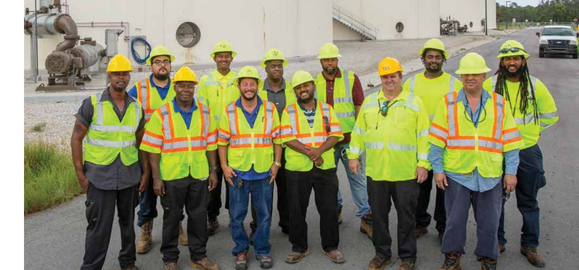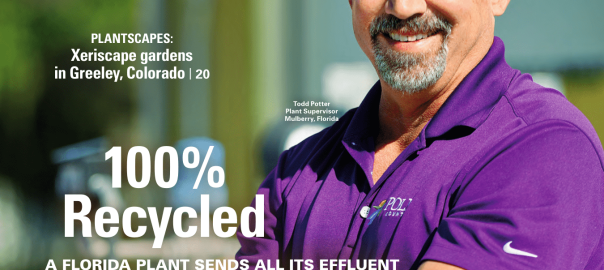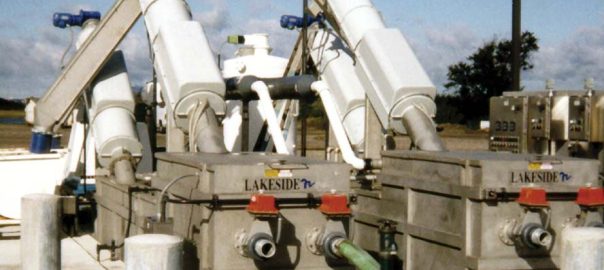





How do you make your wastewater treatment plant energy efficient? It’s estimated that upwards of 60% of a plant’s operating expenses are electricity costs. The EPA believes that around 4% of all U.S. electricity usage occurs in wastewater treatment. It also results in over 45 million tons of greenhouse gas emissions. Before taking any steps to improve your plant’s efficiency, look into an energy audit. It will help you create a blueprint of what equipment uses the most energy. That gives you the important first step into figuring out where to upgrade equipment and technology in order to cut costs.
Once you’ve completed an audit, pay attention to energy use from one week to the next. Are there extreme increases in usage? Do they happen as expected in the morning rush when people are getting to school or work and again at night when people return home? Those increases are expected. If you’re seeing a drastic increase at 2 a.m., there could be a problem that needs to be addressed.
While upgrades and changes to your water treatment system can cost some money, you can’t automatically dismiss it due to the cost. Over the next months and years, the money you’ve spent is likely to be paid back just in savings on your plant’s electricity bills. These are some of the areas of concern and changes you should consider making.
Have you thought about investing in a renewable energy source at your plant? Solar and wind are possible options. With grants and solar rebates, it’s possible to pay very little to have this type of system installed.
In a sunny location, solar panels can draw the energy from the UV rays and convert it to electricity. Wind turbines do the same. How well they work depends on your location. If your water treatment plant is located in an area where the sun shines most days, solar energy is a must. Even in areas where there’s a mix of sunny days and rainy ones, you will generate some energy on rainy days, too.
Prineville, Oregon, decided to upgrade the water treatment plant with solar panels. They worked out an arrangement with the city to slash power bills in half. Westlake Solar Panels installed panels on seven acres at the wastewater treatment plant without a charge. In return, Westlake will provide a lower electricity rate that is low enough to cut the wastewater treatment plant’s electricity bills from an average of $200,000 a year to $100,000.
Not every day is windy, but a higher elevation or valley may have consistent breezes. Those winds can turn the blades on a wind turbine and create some of the power needed to run a wastewater treatment plant. If it’s windy in your area, wind turbines are beneficial at cutting electricity bills.
Rhode Island’s Field’s Point Wastewater Treatment Facility received a grant to study wind power. The plant spends about $2.5 million each year on electricity. By spending $14 million installing three wind turbines, estimates were that the plant would save over $1 million each year and also reduce greenhouse gases.
You don’t want wastewater lines leaking all over. It lowers pressure and can affect efficiency. It’s also messy and takes extra work to clean up leaks. Broken or malfunctioning equipment is also going to impact efficiency. There’s another important factor to consider. You could be fined if you released untreated wastewater into the environment.
You should be checking your equipment regularly to make sure things are working as expected. If repairs are needed, delaying them can impact productivity, use more electricity, and end up costing you more. A strong maintenance team is a great defense here. If you have a team who are experienced in diagnosing, troubleshooting, and determining when a piece of equipment has outlived its usefulness, you’ll have someone who can quickly get your equipment back up and running and let you know when it’s time to upgrade to something new.
Supervisory Control and Data Acquisition (SCADA) is a system that analyzes equipment in a plant and uses the data it gathers to tell systems controls what to do using that real-time information. With SCADA managing controls, it makes sure flow rates and pumps and other equipment are in sync to prevent overflows. If something is way off, it can set off alarms and alert workers.
Suffolk County Department of Public Works installed a SCADA system to manage the sewer system in Long Island. Doing so saved the county more than $180,000 each year. In just one year, the system helped Suffolk County reduce emergency calls and allow technicians to stop having to travel miles to inspect over 80 pump stations each day.
Some older wastewater treatment plants still use fluorescent lighting and fixtures that use up far more electricity than necessary. If you upgrade your plant’s lighting to energy-efficient LED fixtures, you can save a lot of money.
Oklahoma’s A.B. Jewell Water Treatment Plant upgraded hundreds of fluorescent, metal halide, and high-pressured sodium light fixtures to LED ones. That cut energy consumption by almost 450,000 kWh each year resulting in an annual savings of $22,000. Plus, the new light fixtures and bulbs were still working perfectly five years later, so maintenance costs were minimal.
Some plants have also turned to trapping methane from the water treatment process and using methane for heating. It can drastically reduce heating bills for plants that rely on more expensive heating fuels. Geothermal heating is another option.
In Appleton, Wisconsin, the wastewater treatment plant was heated with cost-effective natural gas. The plant upgraded to a biogas boiler in 2019 and is saving $100,000 in heating costs. It dropped natural gas usage by up to 90%. The cost of the new biogas boiler was just shy of $800,000 and they received a $167,000 rebate for the upgrade. In the end, it’s expected that the savings will pay off the cost of the boiler upgrade in just six years.
Is upgrading worth the expense? If your equipment is older, there are three reasons to consider an upgrade. One, today’s technology helps plants run at optimal efficiency while using as little electricity as possible. Two, it helps prevent plant overload that leads to raw sewage getting released to the nearby river or lake. Three, older equipment is more likely to break down, which can lead to expected downtime and costly repairs.
Even newer equipment may not suit your needs. If there’s been a rush of growth in your area, you may be straining your system with more homes and businesses than your system was designed to manage. Newer equipment will meet the increased demand.
Older equipment hasn’t been designed to reduce electricity consumption. Newer pumps and blowers help to cut electricity bills. Entire components can increase productivity when needed and turn things off during slower times.
In Green Bay, Wisconsin, they updated the blowers on their aeration equipment in two plants. By switching to energy-efficient blowers, they cut electricity usage in half. The Albert Lea Wastewater Treatment Plant in Minnesota installed a combined heat-power system and saved around $100,000 every year.
Even a small change at your wastewater treatment plant can make a huge difference. Lakeside can help you plan the right upgrades to cut your power bills and help your plant run at optimal efficiency. Reach us by phone or email to discuss your energy-efficiency goals.